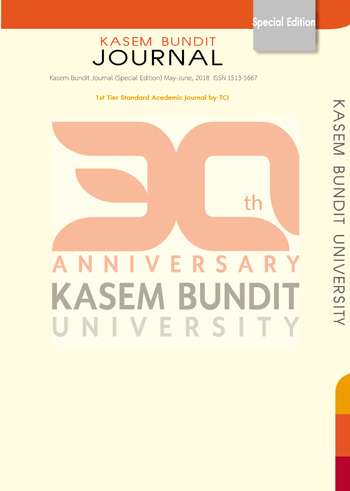Do you have too much overall inventory while experiencing stock-out situations? One culprit may be your system EOQ setting.
Keywords:
Operations improvement, Lean, Inventory Management, EOQAbstract
Optimal EOQ determination is a classic case of a compromise between a set of conflicting elements. When used properly, EOQ makes the proper balance between the costs associated with processing orders (which provides motivation to order large quantities at a time) and the inventory holding costs (which in contrast provides motivation to order as little as possible at a time). In this article, practical and real-life considerations are presented to highlight common mistakes in applying the EOQ formula found in text books.
References
[2] Arami-Niya, A., Daud, W.M.A.W. and Mjalli. S.F. (2011). “Comparative study of the textural characteristics of oil palm shell activated carbon produced by chemical and physical activation for methane adsorption”. Chemical Engineering Research and Design. 8 (9) : 657–664.
[3] Hidayu, A.R., Mohamad, N.F., Matalia, S. and Sharifah, A.S.A.K. (2013). “Characterization of activated carbon prepared from oil palm empty fruit bunch using BET and FT-IR techniques”. Procedia Engineering. 68 : 379 – 384.
[4 ] Osman, N.B., Shamsuddin, N. and Uemura Y. (2016). “Activated Carbon of Oil Palm Empty Fruit Bunch (EFB); Core and Shaggy”. Procedia Engineering.148 : 758 – 764.
[5] Mateo, S., Puentes, J.G., Roberto, I.C., Sánchez S. and Moya, A. J. (2014). “Optimization of acid hydrolysis of olive tree pruning residue Fermentation with Candida guilliermondii”. Biomass Bioenergy. 69 : 39-46.
[6] Hamelinck, C.N., Hooijdonk, G.V. and Faaij, A. P. (2005). “Ethanol from lignocellulosic biomass: Techno-economic performance in short-, middle- and longterm”. Biomass. Bioenergy. 28 : 384 - 410.
[7] Piarpuzán, D., Quintero, J.A. and Cardona, C.A. (2011). “Empty fruit bunches from oil palm as a potential raw material for fuel ethanol production”. Biomass Bioenergy. 35 : 1130-1137.
[8] Karimi, K., Kheradmandinia, S. and Taherzadeh, M. J. (2006). “A Review on 1st and 2nd Generation Bioethanol Production-Recent Progress”. Biomass Bioenerg. 30 : 247-253.
[9] Cazetta, M.L, Celligoi, M.A.P.C., Buzato, J.B. and Scarmino, I.S. (2007). “Fermentation of molasses by Zymomonas mobilis: Effects of temperature and sugar concentration on ethanol production”. Bioresource Technology. 98 : 2824-2828.
[10] Bai, F.W., Anderson, W.A. and Moo-Young, M. (2008). “Ethanol fermentation technologies from sugar and starch feedstocks”. Biotechnology Advances. 26 : 89-105.
[11] Weil, J.R., Dien, B., Bothast, R., Hendrickson, R., Mosier, N.S. and Ladisch. M. R. (2002). “Removal of fermentation inhibitors formed during pretreatment of biomass by polymeric adsorbents”. Industrial & Engineering Chemistry Research. 41 : 6132–6138.
[12] Martin, C., Galbe, M., Wahlbom, C.F., Hahn-Hagerdal, B. and Jonsson, L.J. (2002). “Ethanol production from enzymatic hydrolysates of sugarcane bagasse using recombinant xylose-utilising Saccharomyces cerevisiae”. Enzyme and Microbial Technology. 31 : 274-282
[13] Weil, J.R., Dien, B., Bothast, R., Hendrickson, R., Mosier, N.S. and Ladisch, M.R. (2002). “Removal of fermentation inhibitors formed during pretreatment of biomass by polymeric adsorbents”. Industrial & Engineering Chemistry Research. 41 : 6132-6138.
[14] Ranjan, R., Thust, S., Gounaris, C.E., Woo, M., Floudas, C.A., Keitz, Mv., Valentas, J.K., Wei, J. and Tsapatsis, M. (2009). “Adsorption of fermentation inhibitors from lignocellulosic biomass hydrolyzates for improved ethanol yield and value-added product recovery”. Microporous and Mesoporous Material. 122 : 143-148.
[15] Sahu, A.K., Srivastava, V.C., Mall, I.D. and Lataye, D.H. (2008). “Adsorption of furfural from aqueous solution onto activated carbon: kinetic, equilibrium and thermodynamic study. Separation”. Science and Technolog. 43 : 1239-1259.
[16] Kim, J.K., Oh, B.R., Shin, H.J., Eom, C.Y., Kim, S.W. (2008). “Statistical optimization of enzymatic saccharification and ethanol fermentation using foo waste”. Process Biochem. 43(11) : 1308-1312.
[17] Gao, Y.L., Ju, X.R. and Jiang, H.H. (2006). “Use of response surface methodology to investigate the effect of food constituents on Staphylococcus aureus inactivation by high pressure and mild heat”. Process Biochem. 41(2) : 362-369.
[18] Jin, J., Li, Y., Zhang, J., Wu, S., Cao, Y., Liang, P., Zhang, J., Wong, M.H., Wang, M., Shan, S. and Christie, P. (2016). “Influence of pyrolysis temperature on properties and environmental safety of heavy metals in biochars derived from municipal sewage sludge”. Journal of Hazardous Materials. 320 : 417–426.
[19] AOAC. Official Methods of Analysis of AOAC International, 18th edition, AOAC International, Maryland, USA, 2005.
[20] ASTM, Standard Test Method for Determination of Iodine Number of Activated Carbon. ASTM Committee on Standards, ASTM D 4607-94; ASTM: Philadelphia, PA, USA, 2006.
[21] Elliott, C., Colby, T. and Iticks, H. (1989). “Activated carbon obliterans alter aspiration of activated charcoal”. Chest 96 :672–674.
22 Terzyk, A.P., Gauden, P.A., Zawadzki, J., Rychlicki, G., Wi´sniewski, M. and Kowalczyk, P. (2001). “Toward the characterization of microporosity of carbonaceous films”. Journal of Colloid Interface Science. 243(1) : 183–192.
23. Chen, Y., Chen, W., Huang, B. and Huang, M. (2013). “Chemical Engineering Research and Design Process optimization of K 2 C 2 O 4 -activated carbon from kenaf core using Box–Behnken design”. Chemical Engineering Research and Design. 91(9) : 1783-1789.
[24] Hameed, B.H., Tan, I.A.W. and Ahmad, A.L. (2009). “Preparation of oil palm empty fruit bunch-based activated carbon for removal of 2,4,6-trichlorophenol: Optimization using response surface methodology”. Journal of Hazardous Materials. 164 : 1316-1324.
[25] Alam, M.Z., Ameem, E.S., Muyibi, S.A. and Kabbashi, N. A. (2009). “The factors affecting the performance of activated carbon prepared from oil palm empty fruit bunches for adsorption of phenol”. Chemical Engineering Journal. 155 : 191-198.
Downloads
Published
How to Cite
Issue
Section
License
ทัศนคติ ความคิดเห็นใด ๆ ที่ปรากฏในวารสารเกษมบัณฑิตฉบับนี้เป็นของผู้เขียน โดยเฉพาะ มหาวิทยาลัยเกษมบัณฑิตและบรรณาธิการ ไม่จำเป็นต้องมีความเห็นพ้องด้วย







